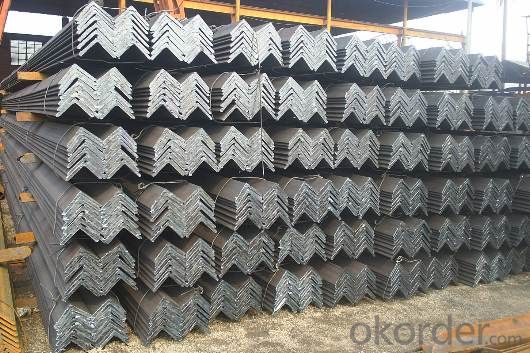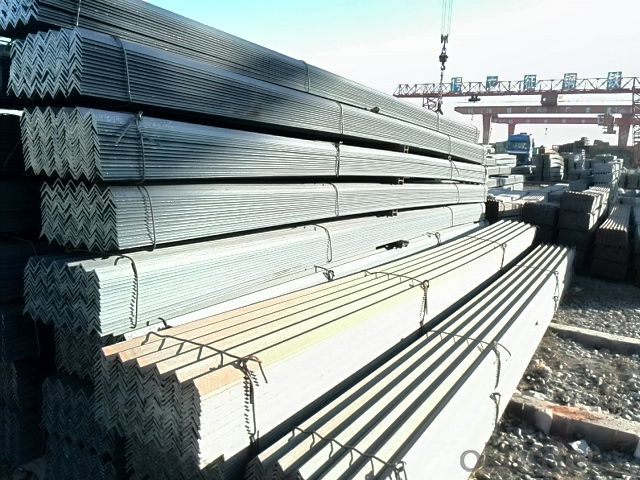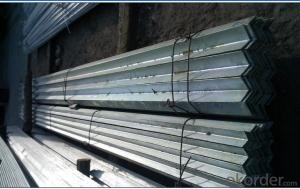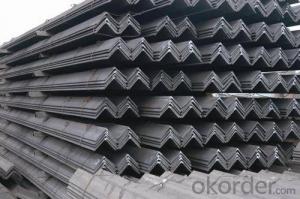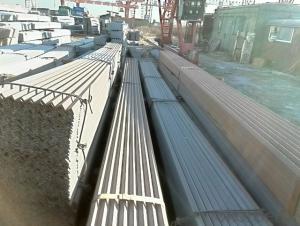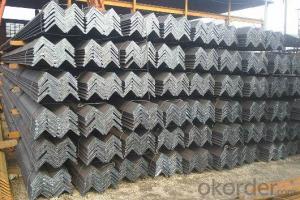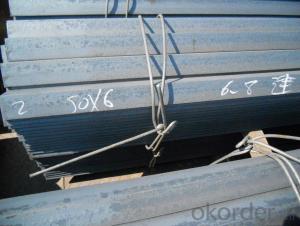Hot Rolled Steel Angles with Best Quality
- Loading Port:
- Tianjin
- Payment Terms:
- TT OR LC
- Min Order Qty:
- 25 m.t
- Supply Capability:
- 10000 m.t/month
OKorder Service Pledge
OKorder Financial Service
You Might Also Like
OKorder is offering Hot Rolled Equal Angles at great prices with worldwide shipping. Our supplier is a world-class manufacturer of steel, with our products utilized the world over. OKorder annually supplies products to European, North American and Asian markets. We provide quotations within 24 hours of receiving an inquiry and guarantee competitive prices.
Product Applications:
Hot Rolled Equal Angles are ideal for structural applications and are widely used in the construction of buildings and bridges, and the manufacturing, petrochemical, and transportation industries.
Product Advantages:
OKorder's Hot Rolled Equal Angles are durable, strong, and resist corrosion.
Main Product Features:
· Premium quality
· Prompt delivery & seaworthy packing (30 days after receiving deposit)
· Corrosion resistance
· Can be recycled and reused
· Mill test certification
· Professional Service
· Competitive pricing
Product Specifications:
Manufacture: Hot rolled
Grade: Q195 – 235
Certificates: ISO, SGS, BV, CIQ
Length: 6m – 12m, as per customer request
Packaging: Export packing, nude packing, bundled
Sizes: 25mm-250mm | ||
a*t | ||
25*2.5-4.0 | 70*6.0-9.0 | 130*9.0-15 |
30*2.5-6.6 | 75*6.0-9.0 | 140*10-14 |
36*3.0-5.0 | 80*5.0-10 | 150*10-20 |
38*2.3-6.0 | 90*7.0-10 | 160*10-16 |
40*3.0-5.0 | 100*6.0-12 | 175*12-15 |
45*4.0-6.0 | 110*8.0-10 | 180*12-18 |
50*4.0-6.0 | 120*6.0-15 | 200*14-25 |
60*4.0-8.0 | 125*8.0-14 | 250*25 |
FAQ:
Q1: Why buy Materials & Equipment from OKorder.com?
A1: All products offered byOKorder.com are carefully selected from China's most reliable manufacturing enterprises. Through its ISO certifications, OKorder.com adheres to the highest standards and a commitment to supply chain safety and customer satisfaction.
Q2: The products are invoicing on theoritical weight or on actual weight?
A2: We can do it in both manners, according to the customers' request.
Q3: Can stainless steel rust?
A3: Stainless does not "rust" as you think of regular steel rusting with a red oxide on the surface that flakes off. If you see red rust it is probably due to some iron particles that have contaminated the surface of the stainless steel and it is these iron particles that are rusting. Look at the source of the rusting and see if you can remove it from the surface.
Images:
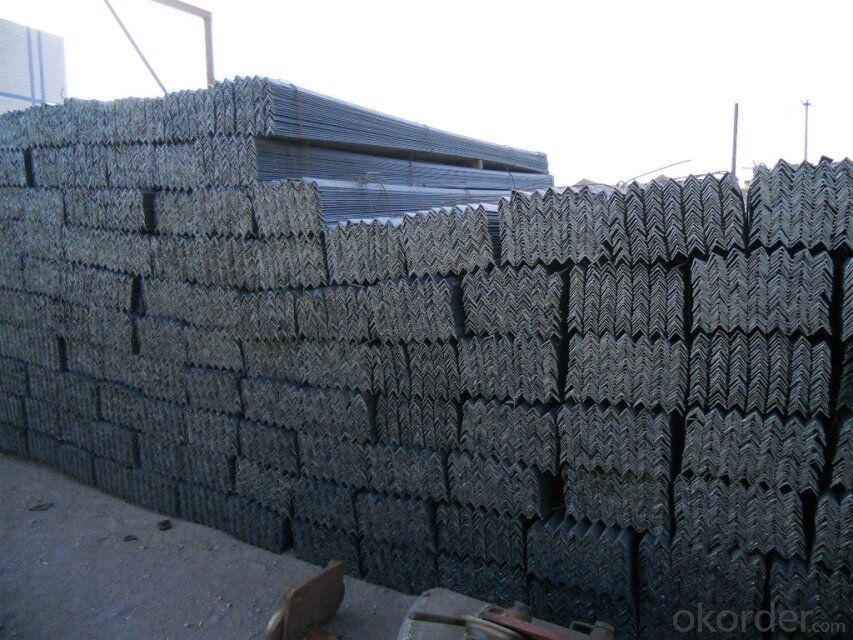
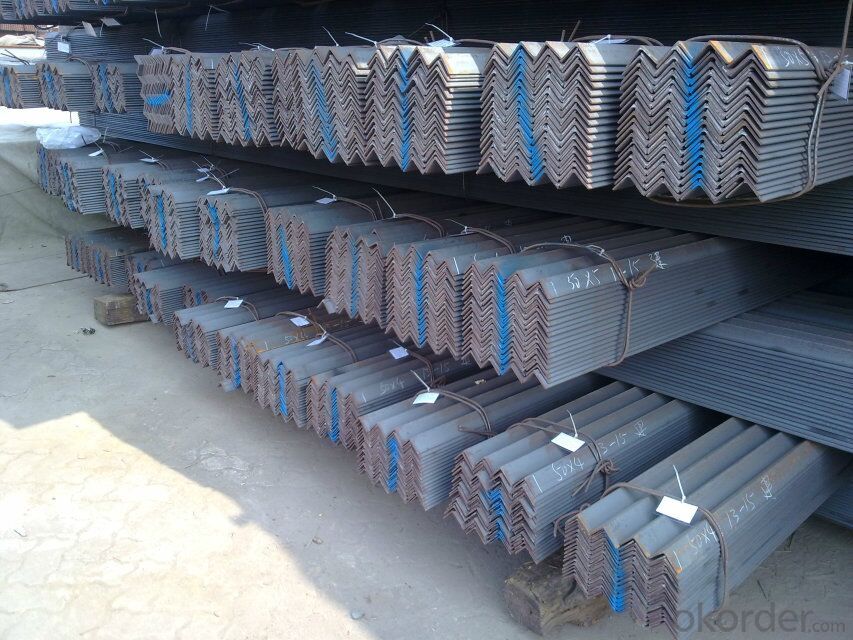
- Q: Can steel angles be used in seismic-resistant structures?
- Yes, steel angles can be used in seismic-resistant structures. They are commonly used as structural members in seismic-resistant construction due to their ability to resist lateral forces and provide stability during earthquakes. Steel angles are strong and rigid, making them suitable for withstanding the dynamic loads and vibrations associated with seismic events.
- Q: What is the maximum axial load for a steel angle?
- The maximum axial load for a steel angle depends on various factors such as the dimensions and grade of the steel angle, as well as the specific application and design considerations. Therefore, it is difficult to provide a specific maximum axial load without knowing these details. Consulting engineering specifications or a structural engineer would be necessary to determine the maximum axial load for a specific steel angle.
- Q: Are steel angles suitable for seismic design?
- Yes, steel angles are commonly used in seismic design. Steel angles offer several advantages that make them suitable for seismic design. Firstly, steel angles have a high strength-to-weight ratio, which means they can withstand high levels of seismic forces while being relatively lightweight. This is important in seismic design as it allows for the construction of structures that can absorb and dissipate seismic energy efficiently. Secondly, steel angles have excellent ductility, which is the ability to deform without breaking. During an earthquake, structures undergo significant deformations due to ground shaking. Steel angles can absorb these deformations by flexing and bending without compromising their structural integrity. This ductility helps in dissipating the seismic energy and prevents the sudden collapse of the structure. Additionally, steel angles can be easily connected and fabricated, allowing for efficient construction in seismic zones. They can be welded or bolted together to create rigid connections that can resist seismic forces. The versatility of steel angles allows for the design of various structural elements, such as braces, beams, and columns, that can effectively withstand seismic loads. Furthermore, steel angles are highly durable and resistant to corrosion, which is crucial in seismic design. Structures in seismic zones are often exposed to harsh environmental conditions, including moisture and corrosive agents. Steel angles can withstand these conditions and maintain their structural integrity over time. In conclusion, steel angles are suitable for seismic design due to their high strength-to-weight ratio, excellent ductility, ease of fabrication, and resistance to corrosion. These properties make steel angles a reliable choice for constructing structures that can withstand and safely absorb seismic forces.
- Q: Are there any limitations or restrictions on the use of steel angles?
- Yes, there are some limitations and restrictions on the use of steel angles. One limitation is the maximum load capacity they can bear. Steel angles have a specific load-bearing capacity based on their size, shape, and material composition. Exceeding this capacity can lead to structural failure or collapse. Another limitation is related to the angle's installation and fixing methods. Steel angles are typically secured using welding, bolting, or other fastening techniques. The strength and effectiveness of these methods can be influenced by factors such as the quality of the weld or the type of fastener used. It is important to follow proper installation procedures and adhere to recommended guidelines to ensure the angles are securely attached. Furthermore, steel angles may have restrictions on their use in certain environments or applications. For example, steel angles may not be suitable for use in highly corrosive environments without appropriate protective coatings or materials. Similarly, in applications where fire resistance is crucial, steel angles may need to be treated with fire-resistant coatings or replaced with other fire-resistant materials. Additionally, the dimensions and lengths of steel angles can impose limitations on their use. Steel angles are available in various sizes and lengths, and these dimensions should be selected carefully to meet the specific requirements of a project. It is important to consider factors such as the load distribution, span length, and overall structural design to ensure the chosen steel angles are appropriate for the intended application. In summary, while steel angles are versatile and widely used in various construction and engineering applications, there are limitations and restrictions to be aware of. These include load-bearing capacity, installation methods, environmental considerations, and dimensional constraints. It is essential to consult with structural engineers, follow industry standards, and ensure proper planning and implementation to ensure the safe and effective use of steel angles.
- Q: How do steel angles perform under dynamic loads?
- Steel angles generally perform well under dynamic loads due to their inherent strength and durability. The structural shape of steel angles, characterized by their L-shaped cross-section, provides excellent resistance to bending and torsional forces. This design allows them to efficiently distribute dynamic loads and resist deformation, making them suitable for various applications in construction, engineering, and manufacturing industries. However, the specific performance of steel angles under dynamic loads can vary depending on factors such as the grade and quality of the steel, the magnitude and frequency of the dynamic load, and the overall design and reinforcement of the structure.
- Q: Can steel angles be used in the construction of power plants?
- Yes, steel angles can be used in the construction of power plants. Steel angles are commonly used in structural applications and are well-suited for supporting heavy loads and providing structural stability. In power plant construction, steel angles can be utilized for various purposes such as framing structural components, supporting equipment and machinery, reinforcing concrete structures, and providing structural integrity to the overall plant infrastructure. Additionally, steel angles offer excellent resistance to corrosion, which is particularly important in power plants where exposure to high temperatures, moisture, and chemicals is common. Overall, the versatility, strength, and durability of steel angles make them a suitable choice for use in the construction of power plants.
- Q: Are steel angles affected by temperature changes?
- Yes, steel angles are affected by temperature changes. Like all materials, steel expands when heated and contracts when cooled. This expansion and contraction can cause dimensional changes in steel angles, leading to potential issues in structural stability and fit. It is important to consider the temperature range that steel angles will be exposed to in their intended application and account for these changes during design and installation. Additionally, extreme temperature fluctuations can also affect the mechanical properties of steel, such as strength and ductility, which should be taken into consideration when selecting the appropriate steel angle for a specific application.
- Q: What are the different surface finishes available for steel angles?
- Some of the different surface finishes available for steel angles include hot-dip galvanized, painted, powder-coated, and untreated/raw.
- Q: Can steel angles be painted?
- Steel angles can indeed be painted. To paint steel angles, you must first clean the surface and then apply a primer before applying the desired paint. The primer serves two purposes: it creates a smooth and even surface for the paint to stick to, and it adds extra protection against corrosion. Once the primer has dried, you can use a brush, roller, or spray gun to apply the paint. It is crucial to select a paint specifically designed for metal surfaces to ensure that it adheres properly and remains durable. In general, painting steel angles is a widely practiced method to improve their appearance and safeguard them from rust and corrosion.
- Q: How do you join steel angles together?
- There are several methods to join steel angles together, depending on the specific requirements and circumstances. Here are some common techniques used: 1. Welding: Welding is a popular and effective method for joining steel angles. It involves melting the edges of the angles together and fusing them using a welding machine. Welding provides strong and durable connections, but it requires skilled personnel and proper safety precautions. 2. Bolting: Bolting is another common way to join steel angles. It involves using bolts, nuts, and washers to connect the angles together. This method provides a secure connection and allows for disassembly if needed. It is relatively straightforward and does not require specialized equipment. 3. Riveting: Riveting is a traditional method that involves using rivets to connect steel angles. It requires drilling holes in the angles and using a rivet gun to secure the rivets. This method provides a strong and permanent connection. 4. Adhesive bonding: Adhesive bonding involves using a strong adhesive to join steel angles together. This method is suitable for lightweight applications and offers the advantage of not requiring heat or specialized equipment. However, it may not be suitable for heavy-duty or high-stress applications. It is important to consider factors such as the load-bearing capacity, structural integrity, aesthetic requirements, and environmental conditions when selecting the appropriate method for joining steel angles together. Additionally, consulting with a professional engineer or fabricator can help ensure the most suitable joining method is chosen for your specific needs.
Send your message to us
Hot Rolled Steel Angles with Best Quality
- Loading Port:
- Tianjin
- Payment Terms:
- TT OR LC
- Min Order Qty:
- 25 m.t
- Supply Capability:
- 10000 m.t/month
OKorder Service Pledge
OKorder Financial Service
Similar products
Hot products
Hot Searches
Related keywords




